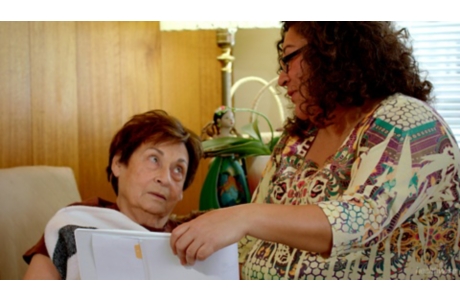Caregiving: Making a Home Safe
Overview
You can help protect the person in your care by making the home safe. Here are some general tips for how to lower the chance of getting injured in the home.
- Pad sharp corners on furniture and counter tops.
- Keep objects that are used often within easy reach.
- Install handrails around the toilet and in the shower. Use a tub mat to prevent slipping.
- Use a shower chair or bath bench when the person bathes.
- Provide good lighting inside and outside the home. Put night-lights in bedrooms, hallways, and bathrooms. Have light at the top and bottom of stairways.
- Have a first aid kit.
It is also important to be aware of safe temperatures in the home. When helping someone bathe, use the back of your hand to test the water to make sure it's not too hot. Lower the temperature setting in the hot water heater to 120°F or lower to avoid burns. And make sure other liquids (such as coffee, tea, or soup) are not too hot.
Protecting the home from fire and carbon monoxide
Here are some things you can do to protect the home from fire and carbon monoxide.
- Install smoke and carbon monoxide detectors in the home. Change the batteries in each twice a year.
- Have a plan for getting out of the home if there is a fire. Practice by having a fire drill.
- Keep a fire extinguisher in the kitchen.
Preventing falls
You can help prevent falls by keeping rooms uncluttered, with clear walkways around furniture. Keep electrical cords off the floor, and remove throw rugs to prevent tripping.
If there are steps in the home, make sure they all have handrails, and always use the handrails. Don't leave items on the steps, and be sure to fix any that are loose, broken, or uneven.
Making the home safer for someone with dementia
If you are caring for someone who has dementia, there are some things you can do to help keep them safe at home.
- Don't move furniture around. The person may get confused.
- Use locks on doors and cupboards. Lock up knives, scissors, medicines, cleaning supplies, and other dangerous items.
- Use hidden switches or controls for appliances. For example, you can install these for the stove, thermostat, and water heater.
- Think about whether it's still safe for the person to cook. It may be okay with some help, depending on the person's condition. But for people who have memory or thinking problems, it's best to avoid any activities that might not be safe.
- Install motion-sensor lights on all doors and windows. Do this if the person tends to wander or tries to leave the home.
- Have emergency numbers in a central area near a phone. Include 911 and numbers for the doctor and family members.
- Get medical alert jewelry for the person. That way you can be contacted if the person wanders away. If you can, provide a safe place for wandering, such as an enclosed yard or garden.
Related Information
Credits
Current as of: October 25, 2024
Author: Ignite Healthwise, LLC Staff
Clinical Review Board
All Healthwise education is reviewed by a team that includes physicians, nurses, advanced practitioners, registered dieticians, and other healthcare professionals.
Current as of: October 25, 2024
Author: Ignite Healthwise, LLC Staff
Clinical Review Board
All Healthwise education is reviewed by a team that includes physicians, nurses, advanced practitioners, registered dieticians, and other healthcare professionals.



